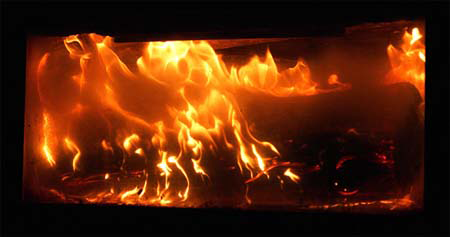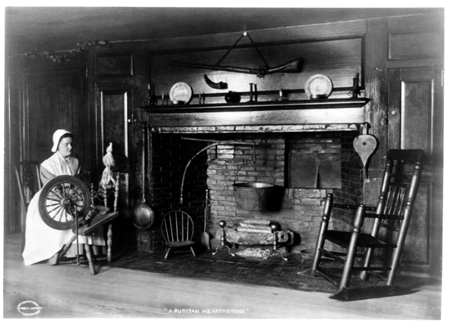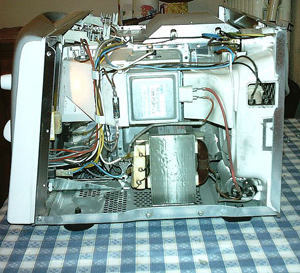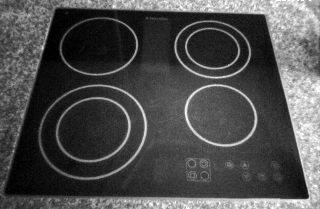Fire in the Kitchen
by Andy Boyd
Today, fire in the kitchen. The University of Houston presents this series about the machines that make our civilization run, and the people whose ingenuity created them.
The way we prepare food has changed a lot through the centuries. But there's one universal element to all kitchens: heat. And until the twentieth century, that meant fire.
During the time of the Pilgrims, fire was the center of attention. Houses had a single room where families ate, worked, and slept. In one wall stood a large hearth, perhaps ten feet wide and five feet high. A fire burned continuously, if for no other reason than it was hard to restart once it went out. The well-outfitted homemaker kept flint and steel on hand to spark a fire to life when needed. But it was usually easier to simply borrow a cup of embers from the neighbors.

Early American homes had wooden chimneys lined with clay. These soon gave way to hearths with chimneys made from handcrafted bricks. Chimneys rarely captured all the smoke, so the smell permeated most dwellings. There was no need for a special smokehouse, since meat could be smoked by simply hanging it in attic. In northern homes, wood-planked floors were cleaned with a daily sprinkling of sand. The sand worked as an abrasive, removing cooking odors.
Iron pots, kettles, and fry pans were kept near the hearth. Ladles, pronged forks, and other utensils were long — designed to cook the food without cooking the cook. Fry pans with long handles were built with attached legs, holding them a foot or so in the air — perfect for getting close to the flame while keeping ashes out of the food.

Hooks dangled from the roof of the hearth's interior. Here items were hung over the fire — kettles for boiling water or warming ale; pots filled with simmering stews. A large cast iron pot could weigh as much as thirty or forty pounds. Cooking required more than knowing recipes. It required muscles.
Large pieces of meat and fowl were cooked by wrapping them in string then hanging them directly over the fire. They required constant attention — checking the wrapping, turning the meat. That meant many trips in and out of the heat for the beleaguered cook.
Baked goods, including breads and cakes, were cooked in a brick oven situated on one side of the hearth. Baking was an art. It required knowing when the heated bricks were at just the right temperature. And if a cake or a pie was burned, the cook couldn't save dessert by running to the corner mini-mart for some ice cream.
Like most of us, my family gets our turkey at the local grocery store. We make stuffing using bread cooked at a bakery, water boiled in our microwave, and vegetables sauteed on a ceramic stove top. We stuff the bird, turn the oven to 325 degrees, and peer in through the window, waiting for the small plastic wand to pop out and tell us it's done. And I'm thankful. Not just for friends and family. But for the technology that keeps us out of the fire.


I'm Andy Boyd at the University of Houston, where we're interested in the way inventive minds work.
(Theme music)
This episode is an updated version of episode 2437.
E. M. Plante. The American Kitchen 1700 to the Present: From Hearth to Highrise.New York: Facts on File, 1995.
All pictures are from Wikimedia Commons
This episode was first aired on November 23, 2016